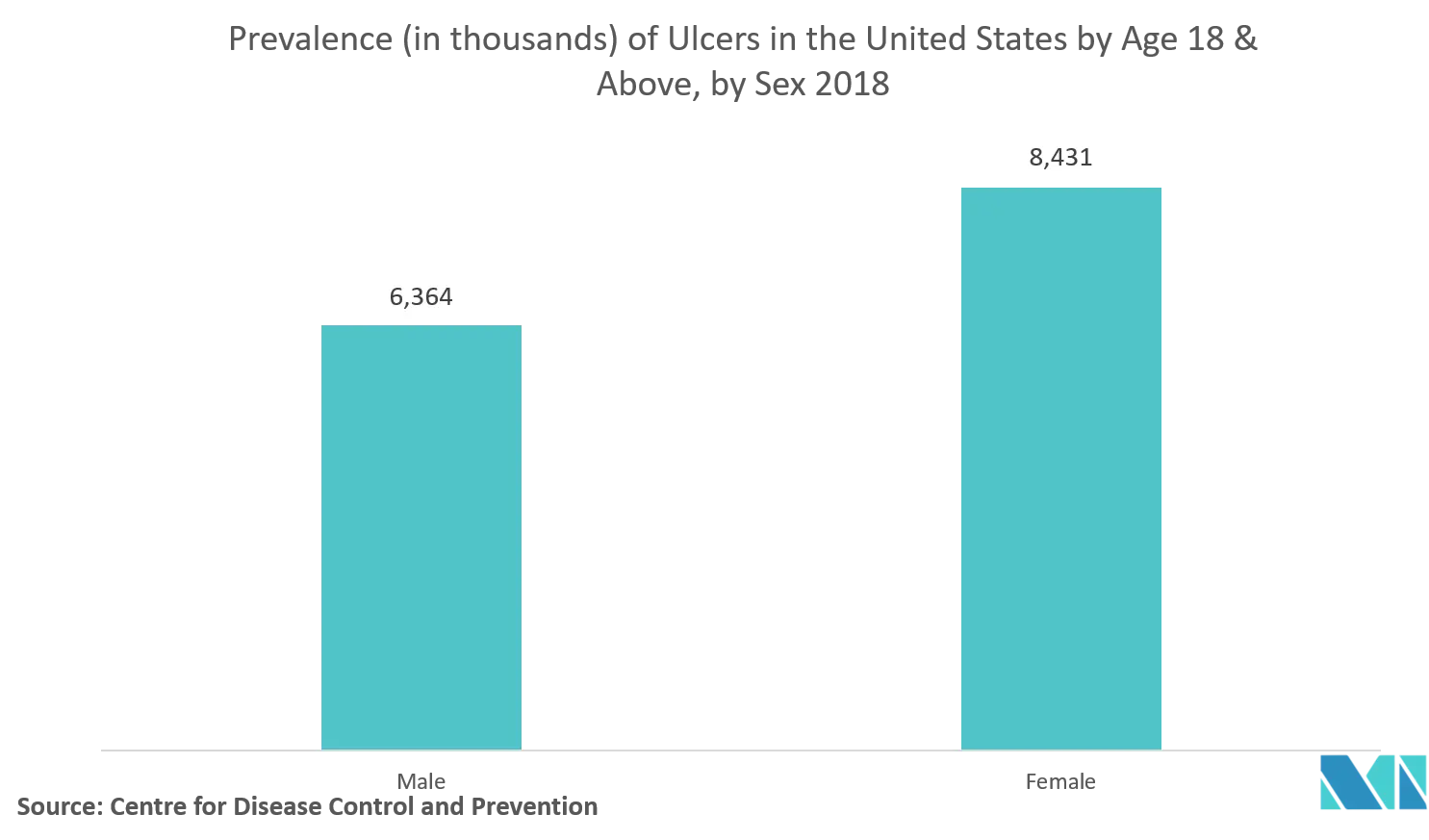Market Trends of Ingestible Sensors Industry
This section covers the major market trends shaping the Ingestible Sensors Market according to our research experts:
Healthcare/Medical Sector to hold a Significant Market Share.
The medical and healthcare industry is believed to have the largest market size in 2018 due to the presence of capsule endoscopes for nearly two decades in the market. In the medical sector, ingestible sensors are used in capsule endoscopy, patient monitoring, and controlled drug delivery applications. They notify physicians about drug interactions and the usage of particular drugs by patients, thereby improving medication adherence.
These additional advantages have further fueled their demand in the medical vertical. Capsule endoscopy has established itself as an effective and precise way of endoscopic imaging. As such, the reimbursements for capsule endoscopy procedures are also available in the developed markets. Furthermore, the increasing prevalence of gastrointestinal disorders is also expected to fuel the expansion of capsule endoscopy and is leading to the growth of the diagnosis segment of the market.

North America to Account for a Major Market Share
The advent of new technology is driving the growth of the ingestible sensor market across all global segments. North America is expected to dominate the market with the largest market share, owing to the adoption of extensive medical applications and the availability of sophisticated infrastructure.
The United States is the most prominent country in the region, with regard to technological advancements and increasing adoption of Internet of Things (IoT) in healthcare as it enables the monitoring, controlling, and tracking of daily routine including medicine intake using the internet. IoT in healthcare is witnessed to be a new wave of digital medication.
Innovations in the field of science and technology that resulted in the development of tiny camera pills, which are widely used in these products, are likely to boost the region's growth. The rise in chronic and gastrointestinal diseases is also said to be a key factor driving the region's expansion.


